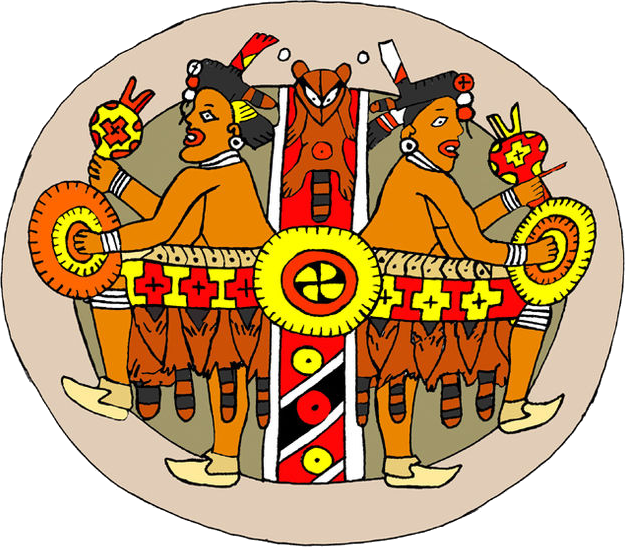The Columbian Exchange or Grand Exchange refers to the widespread transfer of animals, plants, culture, human populations, communicable diseases, technology and ideas between the American and Afro-Eurasian hemispheres in the 15th and 16th centuries, related to European colonization and trade (including African/American slave trade) after Christopher Columbus' 1492 voyage. The contact between the two areas circulated a wide variety of new crops and livestock, which supported increases in population in both hemispheres. Traders returned to Europe with maize, potatoes, and tomatoes, which became very important crops in Europe by the 18th century. Similarly, Europeans introduced manioc and peanut to tropical Asia and West Africa, where they flourished and supported growth in populations on soils that otherwise would not produce large yields.
The term was first used in 1972 by American historian Alfred W. Crosby, in his eponymous work of environmental history. It was rapidly adopted by other historians and journalists and has become widely known.
Origin of term

In 1972 Alfred W. Crosby, an American historian at the Eastern Maine Community College, published The Columbian Exchange. This book covers the environmental impact of Columbus' landing in the new world. The term has become popular among historians and journalists, such as Charles C. Mann, whose book 1493 expands and updates Crosby's original research.
Influence
.jpg/800px-West-East_(8531942707).jpg)
Crops
Before AD 1500, potatoes were not grown outside of South America. By the 1840s, Ireland was so dependent on the potato that the proximate cause of the Great Famine was a potato disease.Maize and manioc, introduced by the Portuguese from South America in the 16th century, have replaced sorghum and millet as Africa's most important food crops. 16th-century Spanish colonizers introduced new staple crops to Asia from the Americas, including maize and sweet potatoes, and thereby contributed to population growth in Asia.
Tomatoes, which came to Europe from the New World via Spain, were initially prized in Italy mainly for their ornamental value (see below). From the 19th century tomato sauces became typical of Neapolitan cooking and, ultimately, Italian food in general. Coffee from South America and sugar cane from The Indies became the main export commodity crops of extensive Latin American plantations. Introduced to India by the Portuguese, chili and potatoes from South America have become an integral part of Indian cuisine.
Before the Columbian Exchange, there were no oranges in Florida, no bananas in Ecuador, no paprika in Hungary, no potatoes in Ireland, no coffee in Colombia, no pineapples in Hawaii, no rubber trees in Africa, no chili peppers in Thailand, and no chocolate in Switzerland.
Livestock
Initially, at least, the Columbian exchange of animals largely went through one route, from Europe to the New World, as the Eurasian regions had domesticated many more animals. Horses, donkeys, mules, pigs, cattle, sheep, goats, chickens, large dogs, cats and bees were rapidly adopted by native peoples for transport, food, and other uses. One of the first European exports to the Americas, the horse, changed the lives of many Native American tribes in the mountains. They shifted to a nomadic lifestyle, as opposed to agriculture, based on hunting bison on horseback and moved down to the Great Plains. The existing Plains tribes extended their territories with horses, and the animals were considered so valuable that horse herds became a measure of wealth.
Disease
European exploration of tropical areas was aided by the New World discovery of quinine, the first effective treatment for malaria. Europeans suffered from this disease, but some indigenous populations had developed at least partial resistance to it. In Africa, resistance to malaria has been associated with other genetic changes among sub-Saharan Africans and their descendants that can cause sickle cell anemia.
Before regular communication had been established between the two hemispheres, the varieties of domesticated animals and infectious diseases that jumped to humans, such as smallpox, were strikingly more numerous in the Old World than in the New. Many had migrated west across Eurasia with animals or people, or were brought by traders from Asia, so diseases of two continents were suffered by all occupants. While Europeans and Asians were affected by the Eurasian diseases, their endemic status in those continents over centuries resulted in many people gaining acquired immunity.
By contrast, "Old World" diseases had a devastating effect when introduced to Native American populations via European carriers, as the people in the Americas had no natural immunity to the new diseases. Measles caused many deaths. The smallpox epidemics are believed to have caused the largest death tolls among Native Americans, surpassing any wars and far exceeding the comparative loss of life in Europe due to the Black Death. It is estimated that upwards of 80â€"95 percent of the Native American population died in these epidemics within the first 100â€"150 years following 1492. Many regions in the Americas lost 100%.
Similarly, yellow fever is thought to have been brought to the Americas from Africa via the Atlantic slave trade. Because it was endemic in Africa, many people there had acquired immunity. Europeans suffered higher rates of death than did African-descended persons when exposed to yellow fever in Africa and the Americas, where numerous epidemics swept the colonies beginning in the 17th century and continuing into the late 19th century.
Debate on the origins of syphilis has been raging for centuries. New genetic evidence supports the theory that Christopher Columbus brought syphilis to Europe from the New World. According to the study, genetic analysis of the syphilis family tree reveals that its closest relative was a South American disease that causes yaws, an infection caused by a sub-species of the same bacterium.
Examples
Tomatoes in the Old World
It took three centuries after their introduction in Europe for tomatoes to become widely accepted. Of all the New World plants introduced to Italy, only the potato took as long as the tomato to gain acceptance. In large part this was due to 16th-century physicians believing that this native Mexican fruit was poisonous and the generator of "melancholic humours." In 1544, Pietro Andrea Mattioli, a Tuscan physician and botanist, suggested that tomatoes might be edible, but no record exists of anyone consuming them at this time. On October 31, 1548 the tomato was given its first name anywhere in Europe when a house steward of Cosimo de' Medici, the grand duke of Tuscany, wrote to the Medici private secretary that the basket of pomi d'oro "had arrived safely." At this time the label pomi d'oro was also used to refer to figs, melons, and citrus fruits in treatises by scientists.
In the early years, tomatoes were mainly grown as ornamentals in Italy. For example, the Florentine aristocrat Giovanvettorio Soderini wrote how they "were to be sought only for their beauty" and were grown only in gardens or flower beds. Tomatoes were grown in elite town and country gardens in the fifty years or so following their arrival in Europe and were only occasionally depicted in works of art. However, in 1592 the head gardener at the botanical garden of Aranjuez near Madrid, under the patronage of Philip II of Spain wrote, "it is said [tomatoes] are good for sauces." Besides this account, tomatoes remained exotic plants grown for ornamental purposes, but rarely for culinary use. The combination of pasta with tomato sauce was developed only in the late nineteenth century. Today around 32,000 acres (12,950Â ha) of tomatoes are cultivated in Italy, although there are still areas where relatively few tomatoes are grown and consumed.
Unintentional introductions

Plants that arrived by land, sea, or air in "ancient" times (or before 1492 in the UK) are called archaeophytes, and plants introduced to Europe after those times are called neophytes. In addition to the diseases mentioned above, many species of organisms were introduced to new habitats on the other side of the world accidentally or incidentally. These include such animals as brown rats, earthworms (apparently absent from parts of the pre-Columbian New World), and zebra mussels, which arrived on ships.
Invasive species of plants and pathogens also were introduced by chance, including such weeds as tumbleweeds (Salsola spp.) and wild oats (Avena fatua). Some plants introduced intentionally, such as the kudzu vine introduced in 1894 from Japan to the United States to help control soil erosion, have since been found to be invasive pests in the new environment. Fungi have been transported, such as the one responsible for Dutch elm disease, killing American elms in North American forests and cities, where many had been planted as street trees. Some of the invasive species have become serious ecosystem and economic problems after establishing in the New World environments.
A beneficial, although probably unintentional, introduction is Saccharomyces eubayanus, the yeast responsible for lager beer now thought to have originated in Patagonia.
Introduced feral populations

Escaped and feral populations of non-indigenous animals have thrived in both the Old and New Worlds, often displacing native species.
Gray squirrels have been particularly successful in colonising Great Britain and populations of raccoons can now be found in some regions of Germany and Japan. Fur farm escapees such as coypu and American mink have extensive populations in the Old World.
In the New World, populations of feral European cats, pigs, horses and cattle are common.

